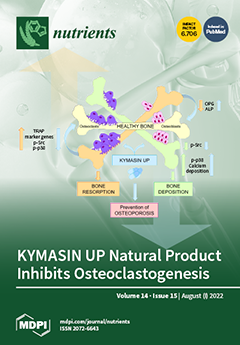Background: Early assessment of carotid atherosclerotic plaque characteristics is essential for atherosclerotic cardiovascular disease (ASCVD) risk stratification and prediction. We aimed to identify different trajectories of lipid profiles and investigate the association of lipid trajectories with carotid atherosclerosis (CAS) progression in a large,
[...] Read more.
Background: Early assessment of carotid atherosclerotic plaque characteristics is essential for atherosclerotic cardiovascular disease (ASCVD) risk stratification and prediction. We aimed to identify different trajectories of lipid profiles and investigate the association of lipid trajectories with carotid atherosclerosis (CAS) progression in a large, longitudinal cohort of the Chinese population. Methods: 10,412 participants aged ≥18 years with ≥2 times general health checkups were included in this longitudinally prospective cohort study at Peking University Third Hospital. We used latent class trajectory models to identify trajectories of total cholesterol (TC), low-density lipoprotein cholesterol (LDL-C), triglycerides (TG), and high-density lipoprotein cholesterol (HDL-C) over follow-up time (757 days, IQR: 388–844 days). Results: Participants with carotid plaque were more likely to be older, male, have higher body mass index, have a higher prevalence of hypertension and diabetes, and have a higher level of blood pressure, TG, TC, and LDL-C, compared with carotid intima-media thickness (cIMT) and normal group. Subjects were trichotomized according to different trajectory patterns into stable, moderate-stable, and elevated-increasing classes. TC ≥ 5.18 mmol/L and moderate-stable class (hazard ratio (HR): 1.416, 95% confidence interval (CI): 1.285–1.559,
p: 0.000), TG ≥ 1.70 mmol/L and moderate-stable class (HR: 1.492, 95% CI: 1.163–1.913,
p: 0.002), TG ≥ 1.70 mmol/L and elevated-increasing class (HR: 1.218, 95% CI: 1.094–1.357,
p: 0.000), LDL-C ≥ 3.36 mmol/L and stable class (HR: 1.500, 95% CI: 1.361–1.653,
p: 0.000) were statistically significant associated with CAS progression compared with the reference group. Conclusions: Borderline elevated baseline lipid (TC, TG, and LDL-C) with stable and elevated-increasing trajectories were associated with CAS progression. Long-term strategies for low-level lipid are beneficial for ASCVD management.
Full article






